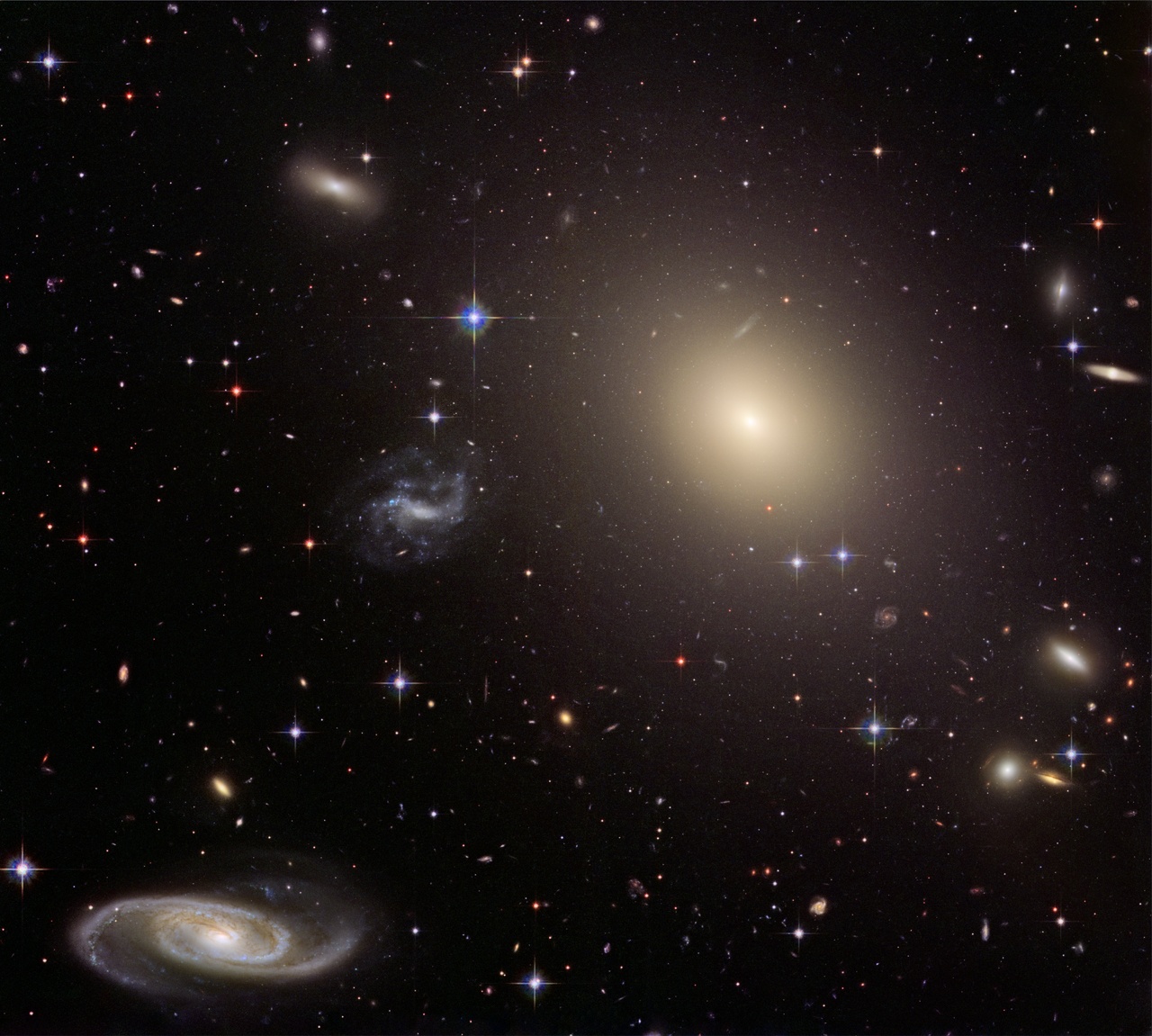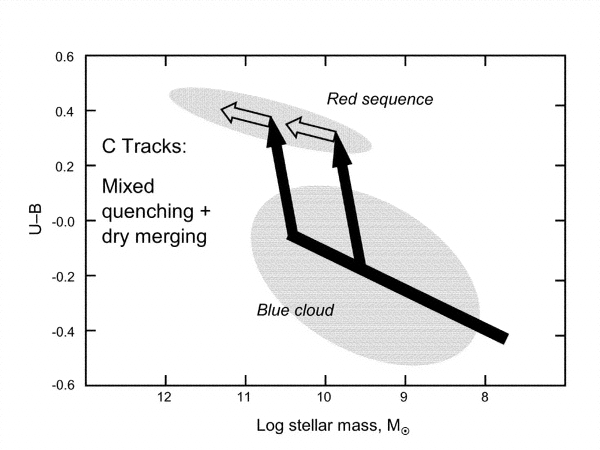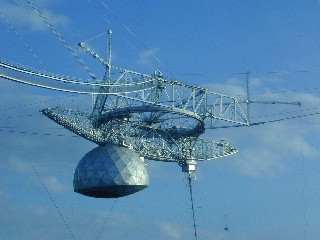 |
(GASS) |
  |
 |
(GASS) |
  |
 Abell S0740  Faber et al. 2007 (larger size)  Picture courtesy of the NAIC - Arecibo Observatory, a facility of the NSF |
The GALEX Arecibo SDSS Survey (GASS) is an ongoing large targeted survey at Arecibo, home to
the world's largest single-dish radio telescope.
The observations started on March 19th 2008.
GASS is designed to measure the neutral hydrogen content of a representative sample of ~1000 massive,
galaxies, uniformly selected from the SDSS spectroscopic and
GALEX imaging surveys.
It is well known that galaxies appear to divide into two distinct families, red and old elliptical galaxies and bluer and star-forming spirals. This bimodality is best seen in color-magnitude plots when UV-to-optical colors are used. Galaxies that appear to be in transition between the two sequences are referred to as green valley galaxies (NUV-r: 3-5). The main purpose of GASS is to understand how do galaxies migrate from the blue cloud to the red sequence. Do we really need another HI survey? HI studies of transition galaxies are currently not possible using existing HI surveys, which sample only shallow volumes. The HI Parkes All-Sky Survey (HIPASS) covered 30000 deg2 and produced a final catalog of around 5000 HI detections with a median redshift of 2800 km/s. This should be contrasted with the main SDSS spectroscopic survey, which covers around 7000 deg2 and contains more than half a million galaxies with a median redshift of 30,000 km/s. The on-going Arecibo Legacy Fast ALFA Survey (ALFALFA) will map 7000 deg2 to considerably deeper limits and is expected to detect more than 25,000 extragalactic HI line sources out to redshifts of 18,000 km/s. Even so, the galaxies in the transition regime detected with ALFALFA will be predominantly gas-rich. Another on-going extragalactic HI survey, the Arecibo Galaxy Environment Survey (AGES), will cover a total area of 200 deg2 (divided into 13 predesignated regions to sample different environments) to greater depth, but the small area covered does not permit significant overlap with GASS. Thus, the study of the HI properties of transition galaxies requires a specifically designed, targeted survey. GASS will produce the first statistically significant sample of massive transition galaxies with homogeneously measured stellar masses, star formation rates and gas properties. The combination of SDSS, GALEX and Arecibo data will result in a rich, homogeneous dataset of structural and physical parameters (e.g., luminosity, stellar mass, size, surface brightness, gas-phase and stellar metallicities, AGN content, velocity dispersions), star formation rates and gas properties for a sample of ~1000 galaxies with stellar mass greater than 1010 Msun and gas mass fractions as low as 1.5%. The analysis of the GASS sample will allow us to investigate if and how the cold gas responds to a variety of different physical conditions in the galaxy, thus yielding important insights on the physical processes responsible for the transition between blue, star-forming spirals and red, passively-evolving old ellipticals. GASS will be of considerable legacy value not only in isolation but also by complementing on-going HI-selected surveys. |